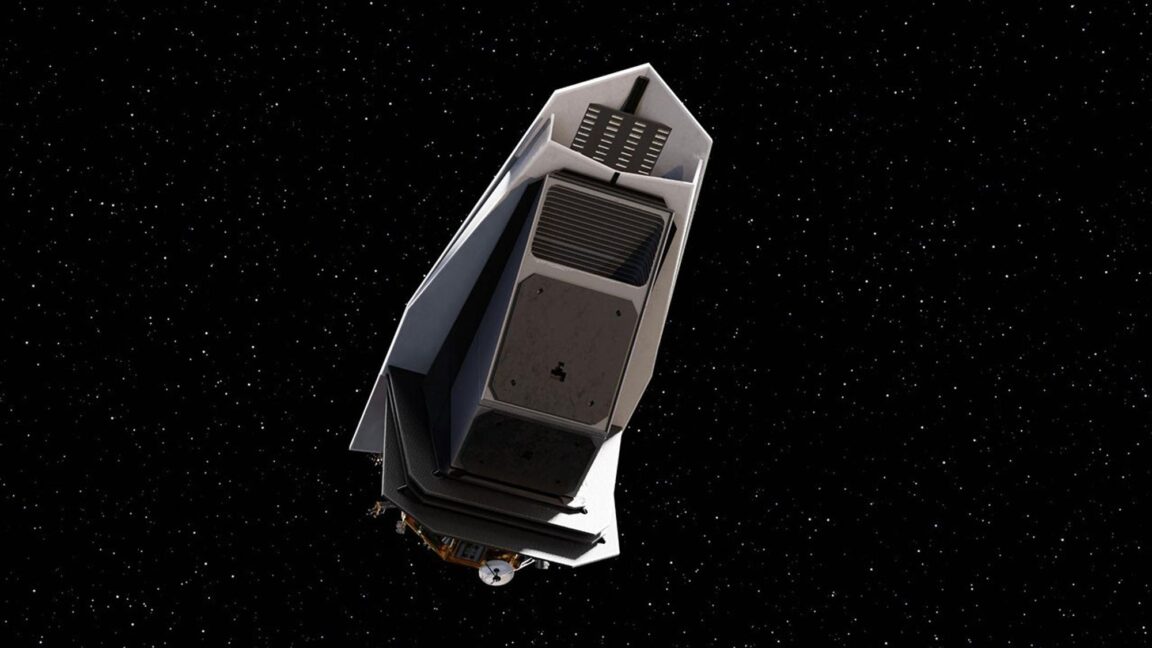
Asteroid 2024 YR4 may be a dud, but we will soon find many more threats
arstechnica.com
No Sweet Meteor of Death just yet Asteroid 2024 YR4 may be a dud, but we will soon find many more threats "The YR4 episode is just the beginning." Eric Berger Feb 24, 2025 9:39 am | 1 NASA's Near-Earth Object (NEO) Surveyor is the first space telescope specifically designed to hunt asteroids and comets that may be potential hazards to Earth. Credit: NASA NASA's Near-Earth Object (NEO) Surveyor is the first space telescope specifically designed to hunt asteroids and comets that may be potential hazards to Earth. Credit: NASA Story textSizeSmallStandardLargeWidth *StandardWideLinksStandardOrange* Subscribers only Learn moreIt was only a few days ago that a certain fear-mongering website named, ahem, Ars Technica published an article about the prospect of a killer asteroid striking the planet Earth in the year 2032.At the time, the odds of a small asteroid first discovered late last yearand designated 2024 YR4hitting us were non-negligible. There was an estimated 3.2 percent chance that the large rock would impact the planet eight years from now.In the days since then, the odds have fallen dramatically. Based on the latest estimate from NASA, there is now just a 0.0039 percent chance. Put another way, the odds of impact are 1 in 26,000.Now you might be inclined to call the author of that news article a planetary hero, as the odds of an impact have dropped precipitously since publication of this dire warning. The correlation is clear and convincing. We're more modest than that here at Ars, although we wouldn't turn away some new subscribers.In reality, even as the near-Earth asteroid 2024 YR4 was moving away, ground-based telescopes were able to gather enough observations to get a better handle on its orbit. So we can safely take a deep breath and return to the more pressing existential problems posed by threats on this planet, rather than off-world.However, there is something that we should all take away from this experience.Astronomers will find a lot more of theseCity-killer asteroids the size of 2024 YR4 are fairly common in the inner Solar System. This asteroid was likely somewhere between 40 and 100 meters across, which is large enough to cause regional destruction on the planet, but small enough to be difficult to find with most telescopes. However, we should expect to find more of them in the coming years."An object the size of YR4 passes harmlessly through the Earth-Moon neighborhood as frequently as a few times per year," Richard Binzel, one of the world's leading asteroid experts and a professor of planetary sciences at the Massachusetts Institute of Technology, told Ars. "The YR4 episode is just the beginning for astronomers gaining the capability to see these objects before they come calling through our neck of the woods."These new capabilities include powerful telescopes, some of which are expressly designed to find near-Earth hazards.The Vera C. Rubin Observatory, formerly known as the Large Synoptic Survey Telescope, is nearing completion in Chile. Among its primary scientific objectives is finding small asteroids near Earth, and it is likely to find many. A little more than two years from now, the NEO Surveyor is scheduled to launch to a Sun-Earth Lagrange point. This NASA-backed instrument will survey the Solar System for threats to Earth. Finally, the Nancy Grace Roman Space Telescope due to launch in 2027 will not look directly for asteroids, but also is likely to find threats to Earth.With all of these tools coming online, astronomers believe we are likely to find 10 or even 100 times more objects like 2024 YR4."For perhaps many of these new discoveries, we will have initial uncertainties about their miss-distance from Earth," Binzel said. "But just like YR4, with a little time and patient tracking, we will be able to rule out entirely any hazard."Finding more asteroids is a good thingBinzel invented what is known as the "Torino Scale" about three decades ago to characterize the threat to humanity from asteroids and comets that are potentially on a collision course with Earth. The scale factors in both the probability of impact of an object as well as the kinetic energy that it could deliver to the planet.This scale ranks objects from 0, meaning no impact, to 10, which is (ok, this is a slight exaggeration) nearly as bad as the destruction of Alderaan in Star Wars.The highest ranking of an asteroid was 99942 Apophis, which briefly reached level 4 on the scale for a few days after its discovery in 2004. (Further analysis revealed that its orbit in 2036 will bring the asteroid near Earth, but not strike the planet.) As for 2024 YR4, it is notable because it reached a level 3 last week, when its odds of striking the planet were highest. But fear not, it's now a level 0.In fact, the message people should take from this whole experience is that the Solar System is full of small rocks whizzing all around. And when it comes to asteroids and comets, knowledge is power."Rather than making anyone anxious, by finding these objects that are already out there and pinning down their orbits, we are becoming more secure in our knowledge that any sizable asteroid is not likely to take us by surprise as an unwelcome guest landing on us," Binzel said.And if there are legitimate threats, the more time we have to prepare a deflection mission to intercept the asteroid, the better.Eric BergerSenior Space EditorEric BergerSenior Space Editor Eric Berger is the senior space editor at Ars Technica, covering everything from astronomy to private space to NASA policy, and author of two books: Liftoff, about the rise of SpaceX; and Reentry, on the development of the Falcon 9 rocket and Dragon. A certified meteorologist, Eric lives in Houston. 1 Comments
0 Комментарии
·0 Поделились
·62 Просмотры


